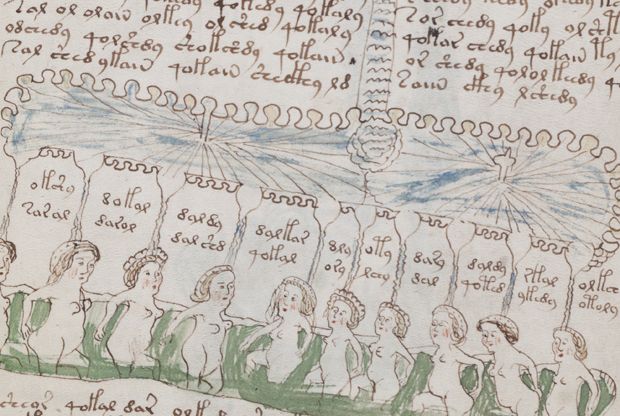
.jpg)
Unbeknown to the scholarly community, the manuscript was written in an extinct and hitherto unrecorded language as well as using an unknown writing system and with no punctuation marks, thereby making the problem triply difficult to solve. After digging through the paper itself, although it is long and detailed, with numerous tables and figures, and is provided with extensive notes and references, the fact that it is undergirded by the following kinds of assumptions and assertions gave me pause: Just reading through the oddly worded, weakly reasoned abstract already made me start to have misgivings about this "peer-reviewed paper". Here, the language and writing system are explained, so that other scholars can explore the manuscript for its linguistic and informative content. On the other hand, a significant vestige of the language has survived into the modern era, because its lexicon has been sequestered into the many modern languages of Mediterranean Europe. The writing system is rather more singular and less intuitive than modern systems, which may explain why it failed to become culturally ubiquitous and ultimately became obsolete. As a result, identifying the language and solving the writing system required some ingenuity and lateral thinking, but both were duly revealed. It includes some words and abbreviations in Latin. It includes diphthong, triphthongs, quadriphthongs and even quintiphthongs for the abbreviation of phonetic components. Some of the symbol variants indicate phonetic accents. Some of the letters have symbol variants to indicate punctuation. It includes no dedicated punctuation marks. Its alphabet uses a number of unfamiliar symbols alongside more familiar symbols. Manuscript MS408 (Voynich) is unusual in a number of respects: 1. " The Language and Writing System of MS408 (Voynich) Explained" In Romance Studies. Here are the title and abstract of Cheshire's peer-reviewed paper: That's pretty impressive! It only took him two weeks, relying on "lateral thinking and ingenuity", to succeed where countless others had failed. Gerard Cheshire two weeks, using a combination of lateral thinking and ingenuity, to identify the language and writing system of the famously inscrutable document.
Voynich manuscript language code#
" Bristol academic cracks Voynich code, solving century-old mystery of medieval text", University of Bristol (May 15, 2019).Ī University of Bristol academic has succeeded where countless cryptographers, linguistics scholars and computer programs have failed-by cracking the code of the 'world's most mysterious text', the Voynich manuscript.Īlthough the purpose and meaning of the manuscript had eluded scholars for over a century, it took Research Associate Dr.


Voynich manuscript language manual#
Now a British academic (in Journal of Romance Studies) declares that it was a manual for nuns written in unencrypted proto-Romance:

What language and script is it written in? What's it about? Although no one has been able to read the manuscript since Wilfrid Voynich, the Polish– Samogitian bibliophile and book dealer first brought it to light more than a century ago, the evocative illustrations and mysteries swirling around it have led to many fruitless attempts at decipherment. Since high school, the Voynich manuscript is something that I have puzzled over from time to time.


 0 kommentar(er)
0 kommentar(er)
